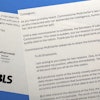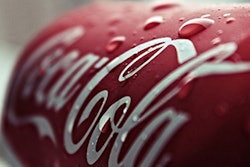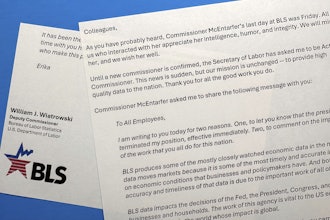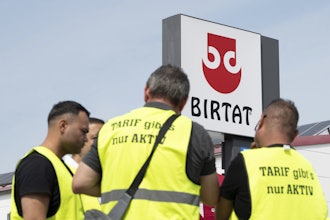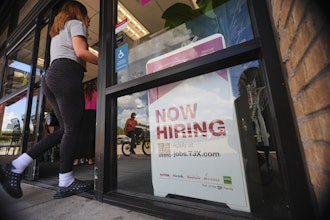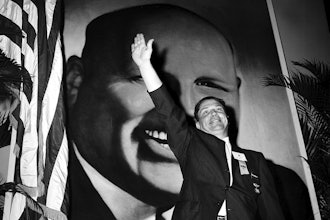For the first time since they carried a lunchbox, U.S. adults are finding themselves the target of milk marketing. But this time, the pitch is for smaller and single-serve offerings and part of an overall trend to bend and reshape milk in size and formulation to the ways foods fit into today’s busy lifestyles.
Cold, single-serve, chocolate milks; coffee-milk lattes; and fruit-dairy smoothies have taken their places in the checkout-line cooler alongside sodas, waters, teas and juices. That’s fitting, since for the past three decades, these beverages have been competing for the revered place that “a gallon of milk” has on shopping lists.
ALSO SEE: ERP in Food
Consider how 50 years ago, nearly every list included bread, coffee, eggs, milk and meat. Now grocery lists are much longer and involve different products and solutions.
All that competition is continuing to drive a sales slide for that old mainstay gallon jug of white milk — a drop-off that started in the 1970s and continues, according to the U.S. Department of Agriculture (USDA) report, Why Are Americans Consuming Less Fluid Milk? A Look at Generational Differences in Intake Frequency.
The decline is especially pronounced among Millennials, just half of whom buy refrigerated milk or dairy alternatives, according to the 2014 Mintel report Milk, Creamers and Non-Dairy Milk. The situation isn’t much better with Generation X, of whom 56 percent buy these products. Meanwhile 64 percent of Baby Boomers keep refrigerated milk alive with their purchases, according to Mintel.
Producers know they can’t afford to continue the sales decline with Generation Z and beyond, especially since the latest USDA dietary research supports the idea that milk consumption is ageless, and milk deserves a place at our tables throughout life.
In particular, producers are battling back against the longstanding milk consumption drop-off that occurs when consumers turn 16 — about the time a carton of school milk is no longer de rigeur. In the late 1970s, about 41 percent of adults reported that they “never” drank milk; today that number is up to 54 percent, the USDA reports. Unless something changes to break the cycle, the numbers of “nevers” will continue to climb.
Innovative producers are going a couple of different routes to drive up dairy sales to adults. Their strategies include improving the packaging and graphics for plain white milk, bolstering healthful attributes with nutritional add-ins and creating products that use milk as an ingredient but are sold as something else.
A Better White Milk
In one category of innovation are products such as Lactaid, which was once the only significant “lactose-free” milk. Horizon Organic and Smart Balance have since put their own easier-to-stomach milks on shelf.
Another enhanced formulation comes from organic milk producers, whose sales have more than doubled in the past 10 years, driving to $5.1 billion the amount spent by consumers on organic dairy in 2014 in the U.S., according to a Bloomberg Business article.
Nutriceutical milks also are filling a value-added dairy niche, with additives such as Omega3, probiotics and DHA along with calcium and vitamins luring some health-conscious consumers to the category.
Milk-based Beverages
Many ready-to-drink coffees, smoothies, protein shakes and meal replacements contain significant amounts of milk. These products represent another sales avenue to consumers who might not pick up a container of plain white milk, but who are attracted to its nutritional profile as viewed from the label of a functional beverage — whether that is the caffeine pick-me-up of a latte, the refreshment of a fruit smoothie or the protein punch of a performance beverage.
Sales of flavored milks, which are trending upward, have finally branched beyond the Neapolitan trifecta of strawberry, vanilla and chocolate into exotic flavors like piña colada, peach and mango.
Processing, Packaging and Size Matter
Although flavors and formulation are important in attracting and retaining adult consumers in the dairy category, it would be a mistake to overlook size, processing and packaging in this equation. The legacy sizes and packages — the gallon and half-gallon plastic jugs — simply don’t intersect with the household sizes and consumption habits much of today’s population. Now that 60 percent of U.S. households consist of one to two people, even the half-gallon jug is too large for on-the-go individuals; they simply are not drinking as many glasses of milk with cookies or PB&J, or eating as many bowls of breakfast cereal. That’s why the new “grab-and-go” products aimed at this cohort, including Kellogg’s Breakfast To Go, come in smaller, 10-ounce portions.
In addition to packaging size, the right processing choice can foster flexibility and increase shelf life — a benefit for retailer and consumer alike. Shelf-safe UHT processing, for example, breaks the refrigeration chain, giving retailers the freedom to sell single products cold and/or ambiently in multi-packs that can be displayed anywhere in the store. Expensive products with premium ingredients, from exotic fruits to nutriceuticals, can benefit from the longer shelf lives provided by UHT. In turn, consumers have the flexibility to throw multi-packs of lattes, smoothies or chocolate milks into their bags for work, or trunks for road trips, without worrying about refrigeration or spoilage.
If producers are serious about attracting adults back to drinking milk and stabilizing sales in the dairy category, it will take many tools: innovations in formulation and flavor, sizing that fits modern lifestyles and processing and packaging that makes dairy products easier to buy and to store. Fostering the next generation of milk drinkers — who, after all, learn food habits from their parents — depends on it.
About the author
Eliseo Barcas, vice president of marketing and sales, Tetra Pak, U.S., is an experienced professional with extensive expertise in understanding and maximizing market trends and supporting customers through strategic portfolio deployment. For more than two decades, he has collaborated with customers and served as a leader in sales and marketing teams in Europe, North America and South America, focusing on fast-moving consumer goods and business-to-business sectors. He currently leads commercial and marketing efforts for Tetra Pak U.S., including defining strategy for the shelf-stable carton portfolio and directing its successful execution.



